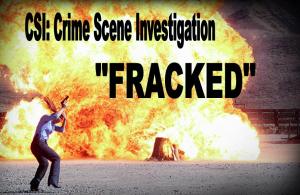According to the Fort Worth Star Telegram, the Barnett Shale natural gas fields of Denton and Wise counties are one of five finalists to be considered for a case study as part of the Environmental Protection Agency’s (EPA) examination of hydraulic fracturing.
That is not a competition I would want to win, but if I were facing possible contamination of drinking-water supplies from oil and gas industry operations in areas where drilling and hydraulic fracturing have already occurred, I’d want to know what the extent of that pollution was.
Nevertheless. a Texas organizer for the Earthworks Oil and Gas Accountability Project, expressed concern Wednesday about the study, stating she felt EPA would be using “people as guinea pigs.” She called for the leaders in those Texas communities to consider placing a moratorium on hydraulic fracturing until after the study is complete (like that is going to happen–sadly probably not) and use some other community for the study.
The Barnett Shale, a geological formation that underlies the better part of more than 20 North Texas counties, currently leads the nation in natural gas production, and Tarrant County is ground zero for the drilling activity.
Hydraulic fracturing, or “fracking,” uses huge volumes of water and sand, along with a much smaller volume of chemical additives (which are somewhat unknown because the industry has been unwilling to reveal what they have been pumping into the ground, but read our earlier blog about diesel used for fracking). All this is pumped down a wellbore under extremely high pressure to fracture the dense rocks and allow natural gas and other hydrocarbons to be released.
In December, the EPA filed an endangerment order against Fort Worth-based Range Resources, contending that two of its Barnett Shale wells caused or contributed to contamination of two residential water wells in Parker County. (check out our earlier blog about the flammable water that triggered the endangerment order)
Range maintains that its wells are not the source of the contamination. It says methane in the water wells likely came from the much shallower Strawn formation, where natural gas wells were drilled in the early 1980s, long before Barnett Shale drilling began, but mysteriously waited to contaminate wells now.
This study could determine the fate of fracking activities in North Texas. Stay tuned.
###
By promoting cleaner energy, cleaner government, and cleaner air for all Texans, we hope to provide for a healthy place to live and prosper. We are Public Citizen Texas.



